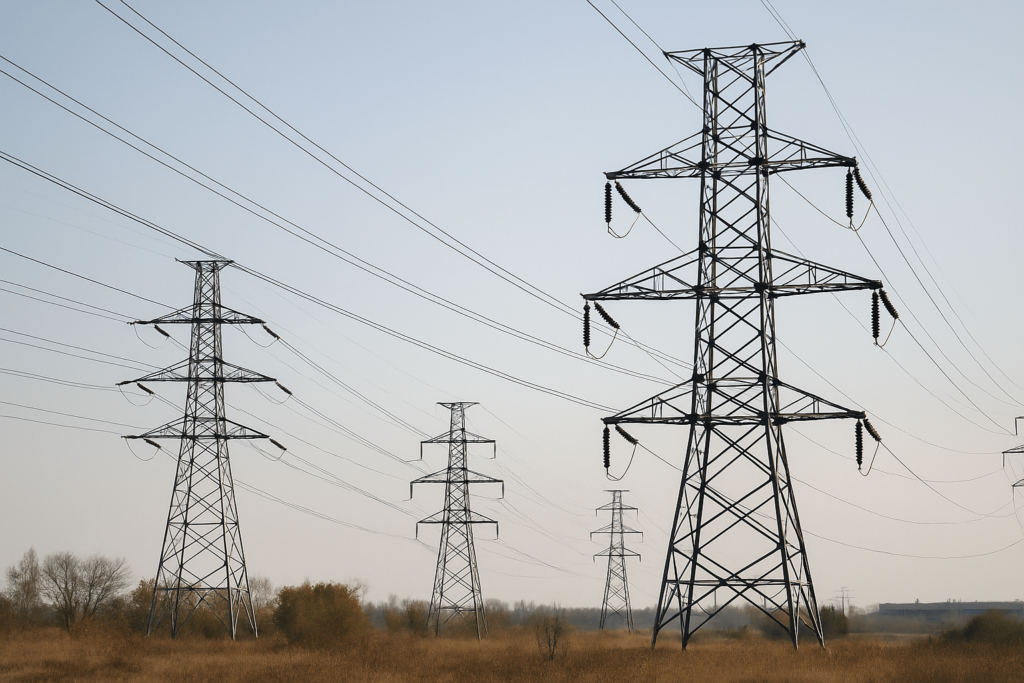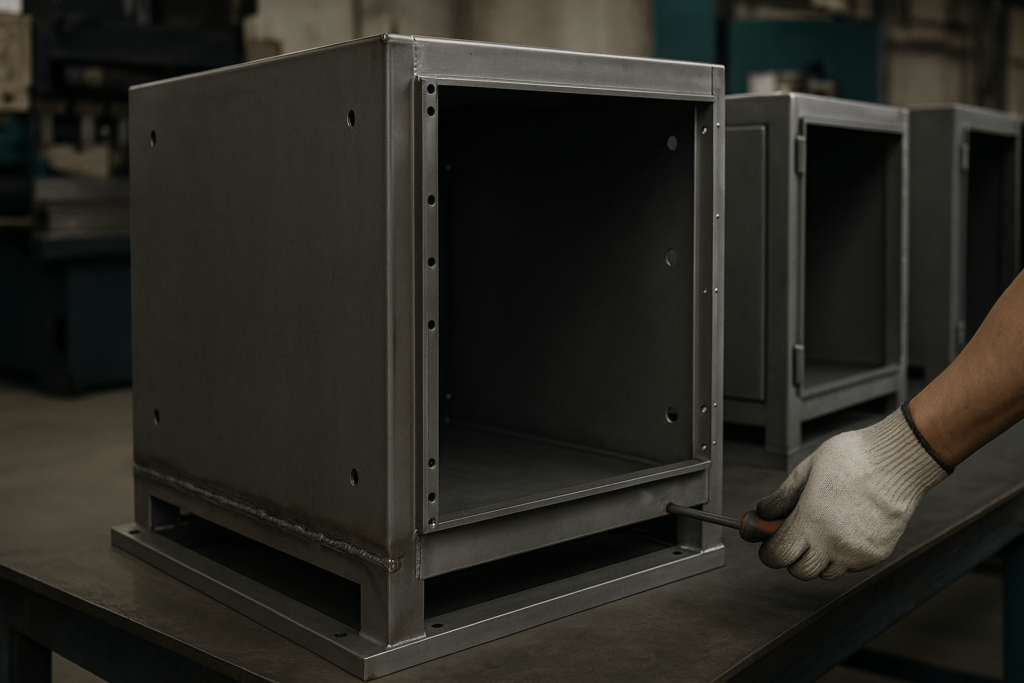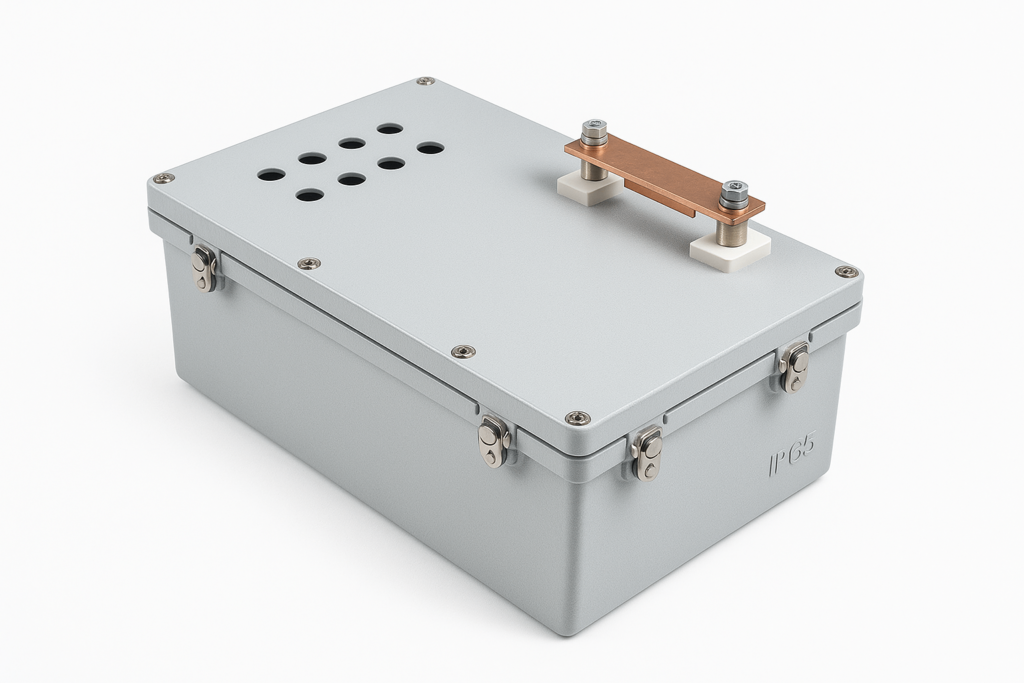Introduction: A Strategic Overview for Procurement Professionals
From the colossal steel transmission towers that form the backbone of a national grid to the precision-milled server racks in a data center, metal structures are the unsung heroes of our electrical world. For B2B procurement teams, distinguishing between high voltage and low voltage systems is not a mere technicality—it plays a crucial role in determining infrastructure costs, material selection, regulatory alignment, and overall operational safety.
This guide explores the critical contrasts between high and low voltage systems from the perspective of strategic procurement. Rather than simply listing technical differences, we unpack how voltage classifications impact real-world fabrication, system integration, and custom enclosure design—backed by YISHANG’s 26+ years of experience as a trusted OEM/ODM supplier in metal product manufacturing.
Chapter 1: The Physics of Power—Why Voltage Matters for Efficiency
Understanding Electrical Losses: The Role of Resistance
Every conductor—whether copper, aluminum, or alloy—produces heat due to resistance. Known as Joule heating, this energy loss becomes significant over distance. For long-haul transmission, minimizing such loss is both a design priority and a procurement consideration when selecting conductor material, insulation specs, and structural loading capacity.
Why Higher Voltage Works: Joule’s Law in Practice
Joule’s Law (P = I²R) reveals that energy loss scales with the square of the current. By increasing voltage, systems can carry the same power at lower current, sharply reducing heat loss. This design principle allows for slimmer conductors, lighter tower loads, and longer-range energy efficiency.
What It Means for Procurement and Design
High-voltage transmission systems use advanced metal frameworks to support these efficiencies. Procurement teams must weigh conductor gauge, raw material optimization (such as ACSR), and the long-term ROI of transformer infrastructure. The trade-off: higher upfront cost for significantly lower lifetime operational losses.
Chapter 2: Mapping the Grid—Metal Structures at Every Voltage Step
From Power Plant to Step-Up Transformer
Electricity generated at 13–25kV must be stepped up to transmission-grade voltage (>500kV). This is handled by transformers enclosed in heavy-duty, welded metal housings. These enclosures demand thermal stability, high mechanical resilience, and corrosion resistance—typically manufactured using galvanized or epoxy-coated steel.
Long-Distance Transmission: Towers and Conductors
High-voltage electricity travels via aluminum conductors (often ACSR) supported by lattice towers engineered to endure tension, wind, and ice loads. Procurement decisions here affect lifespan, service intervals, and overall line reliability.

Substations and Switchgear: The Midpoint Transition
Voltage steps down to 66–132kV at substations. Metal-clad switchgear must safely contain faults, arc flashes, and allow quick isolation. Designs often integrate arc chambers, gas insulation, and reinforced panels—requiring precise fabrication to IEC and IEEE standards.
Local Delivery: Cabinets, Panels, and Safety
As power reaches buildings, it’s stepped down further. The final enclosures—control panels, load centers, and PDU cabinets—must provide safe human interaction, modular expansion, and compliance with UL, CE, or ISO certifications. Key features include finger-safe interiors, DIN rails, and IP-rated protection.
✅ Looking to optimize your low-voltage panel sourcing? YISHANG offers RoHS-certified OEM fabrication of IP66-rated control cabinets tailored for telecom, automation, and smart building applications.
Chapter 3: Enclosure Design Divergence—Built for Different Worlds
Designing for High Voltage Applications
In environments like industrial substations, wind farms, or HV testing labs:
- Cabinets must handle high fault currents and thermal stress.
- Arc-resistant metal construction is vital—multi-layer seams, thick-gauge frames, and pressure relief zones are common.
- Materials often include stainless steel or epoxy-coated steel for corrosion and arc durability.
✅ Searching for a custom high voltage enclosure manufacturer with arc-flash containment expertise? YISHANG supplies ANSI-rated HV cabinets globally.

Low Voltage Systems: Smaller Scale, Higher Density
Low voltage cabinets in smart buildings, data centers, and OEM equipment must support:
- High component density with airflow optimization.
- EMI shielding and modular component access.
- Lightweight yet durable construction—often aluminum or cold-rolled steel with powder coating.
Procurement decisions here focus on form factor precision, integration speed, and customization potential.
Chapter 4: Safety Engineering—Different Risks, Different Protections
Low Voltage: Human-Centric Design
Shock remains the primary hazard. Cabinets must:
- Prevent accidental contact with live components
- Include IP-rated sealing against moisture
- Meet UL 508A, IEC 61439 safety standards for low-voltage enclosures
High Voltage: Managing Catastrophic Arc Flash Events
High-voltage failures can result in arc flash explosions exceeding 19,000°C. Effective design requires:
- Arc-rated enclosures with blast containment
- Reinforced weld seams and internal shielding
- Full compliance with ANSI C37.20.7 or equivalent
Matching Risk with Specification
The procurement team’s role is to translate these risks into sourcing specs:
- For LV: Modular panels with confirmed insulation class and IP54+ certification.
- For HV: Metal cabinets with arc-flash simulation reports and pressure release engineering.
Chapter 5: Where It’s Going—Voltage Trends Reshaping Metal Fabrication
48V DC Systems in Mobility and Computing
A fast-growing middle ground, 48V systems are gaining traction in EVs, battery storage, and edge data hubs.
- Require compact, RoHS-compliant enclosures with integrated thermal solutions
- Often fabricated in aluminum with embedded busbar supports
✅ YISHANG engineers OEM 48V battery enclosure systems with IP65 protection, busbar mounting, and powder-coated finishes for global clients in the energy storage sector.

Intelligent Grid Hardware: Smart, Small, and Exposed
Smart meters, sensors, and edge processors are installed outdoors, on poles, or roadside:
- Must be IP66/IP68 sealed against water and dust
- Require UV/chemical-resistant coatings
- Often paired with tamper alerts and tool-free entry
HVDC Infrastructure for Global Energy Transfer
HVDC is vital for international power lines and renewable grids:
- Large-scale cabinets with corona discharge suppression
- Marine-grade anti-corrosion coatings for coastal installations
- Interior zoning to isolate electronics from switching modules
✅ From China to Europe, YISHANG supplies HVDC enclosure frames and marine-grade metal cabinets engineered for long-haul, high-load corridors.
Voltage Classification Comparison Table
| Feature | Low Voltage System | High Voltage System |
|---|---|---|
| Typical Voltage Range | < 1,000V | > 1,000V |
| Enclosure Materials | CR steel, aluminum, powder-coated sheet metal | Galvanized steel, stainless steel, arc-rated steel |
| Primary Applications | Control panels, data centers, building systems | Power grids, substations, HVDC converters |
| Key Certification Focus | UL508A, IEC 61439, RoHS | ANSI C37.20.7, IEC 62271, IEEE standards |
| Ingress Protection (IP) | IP54–IP66 | IP66–IP68 + arc-containment |
| Common Buyer Priority | Compactness, modularity, fast integration | Arc resistance, long-term durability, compliance |
FAQ: Voltage-Specific Enclosure Procurement
Q1: What type of enclosure is best for outdoor low-voltage applications?
A: Look for IP65 or higher-rated cabinets with aluminum or CR steel, powder-coated for corrosion resistance. YISHANG provides RoHS-compliant low-voltage enclosures for telecom and automation.
Q2: Can you support custom fabrication for HVDC-rated enclosures with anti-corrosion needs?
A: Yes. YISHANG offers marine-grade, epoxy-coated steel cabinets engineered to withstand coastal humidity and HV power surge risks.
Q3: What’s the typical thickness for high-voltage cabinet metal walls?
A: Typically between 2.0–3.5 mm for galvanized or stainless steel, with reinforced internal bracing based on arc-fault energy calculation.
Conclusion: Voltage Isn’t Just Electrical—It’s Structural
Whether you’re specifying a control panel or designing for a megawatt HVDC converter, voltage level shapes every design, material, and compliance decision. At YISHANG, we’ve spent over two decades supporting global clients with precision enclosures for every voltage environment.
From arc-resistant HV switchgear to IP66-rated outdoor panels, our factory produces OEM/ODM components that meet the technical and regulatory standards of modern energy infrastructure.
Need a partner who understands the electrical, structural, and compliance layers of your next project? Let’s build the right enclosure for your voltage specification.
👉 Explore our custom metal enclosures
👉 Contact YISHANG for OEM solutions

